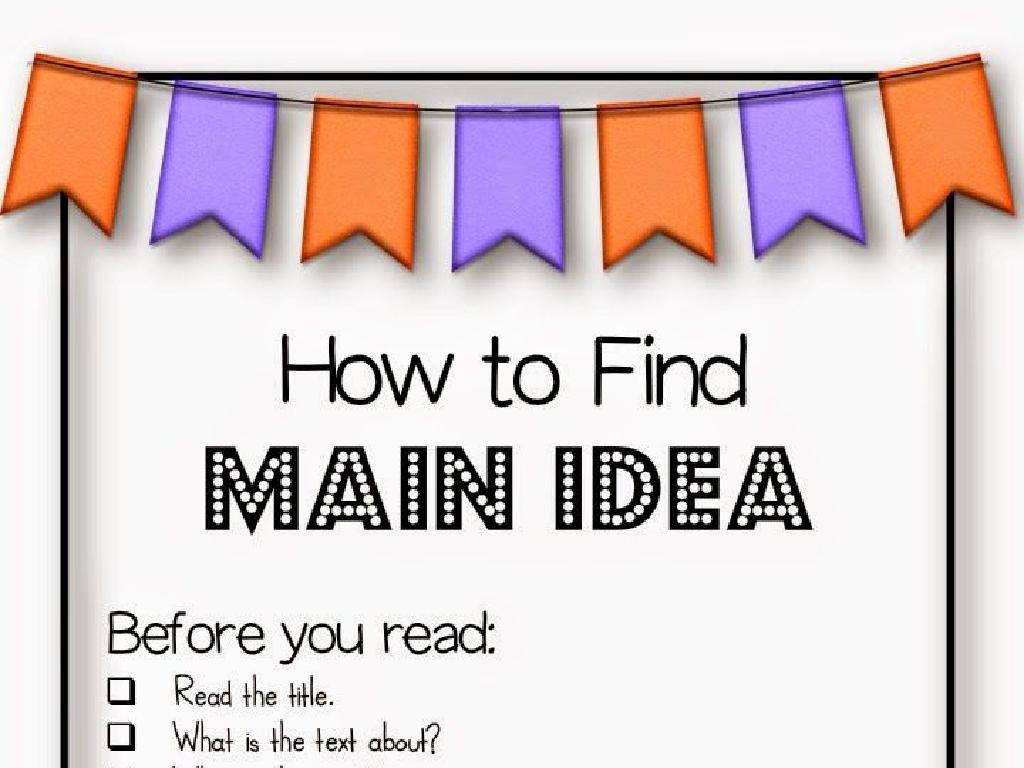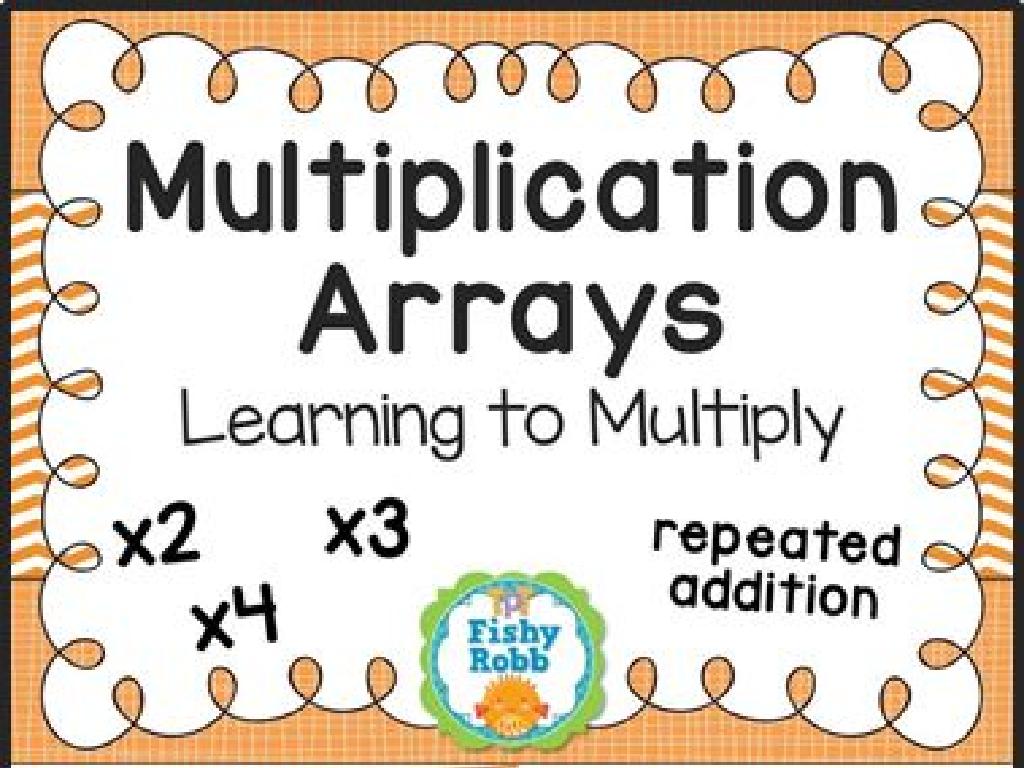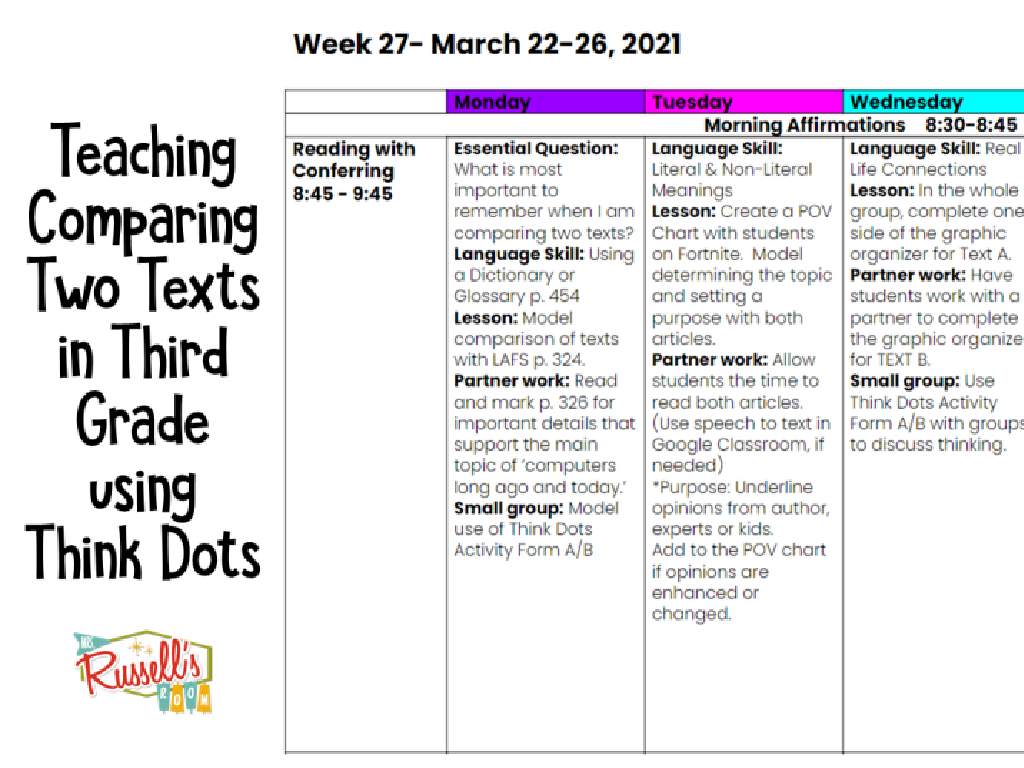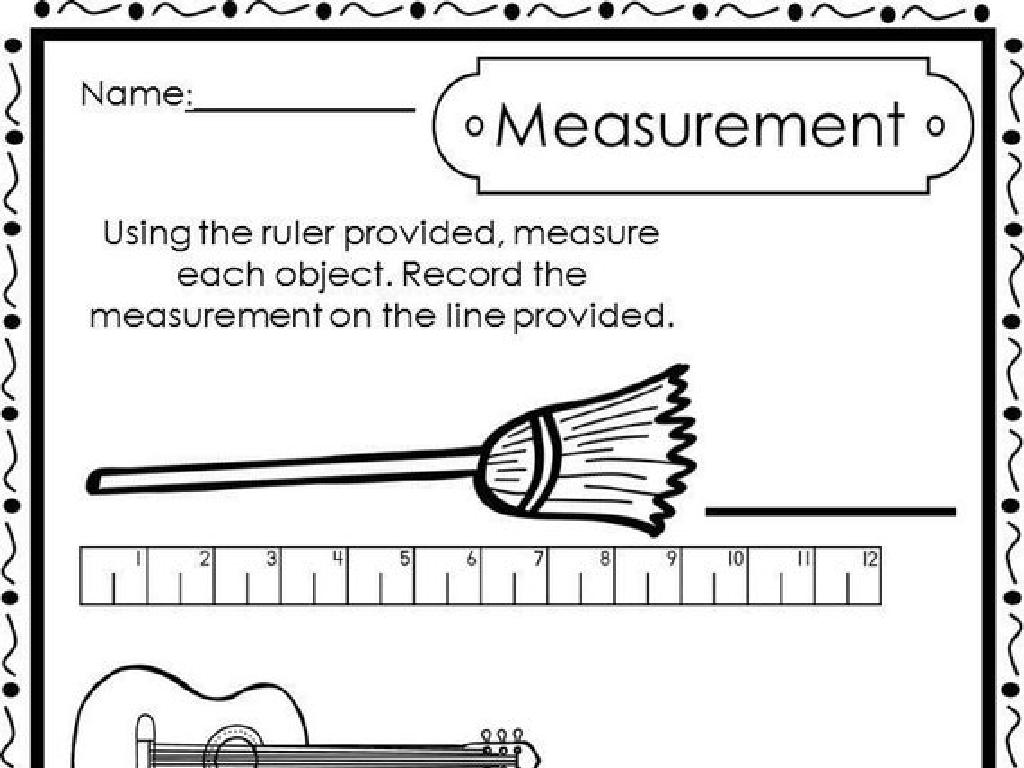Skip-Counting By Twos, Fives, And Tens
Subject: Math
Grade: First grade
Topic: Skip-Counting
Summary: This first grade math presentation introduces skip-counting by twos, fives, and tens through engaging activities and interactive games. Students will discover how skip-counting speeds up counting, supports addition, and builds multiplication readiness. Using number lines, charts, board games, and hopscotch, learners visually and physically practice counting in patterns, boosting number sense. These hands-on exercises help students confidently recognize and count by 2s, 5s, and 10s, making math both fun and meaningful.
Please LOG IN to download the presentation. Access is available to registered users only.
View More Content
Welcome to Skip-Counting!
– Learn about skip-counting
– Skip-counting is jumping numbers in a pattern
– Why skip-counting is useful
– It’s a quick way to count objects or add numbers
– Counting by 2s, 5s, and 10s
– We’ll jump by 2s like 2, 4, 6, or by 5s: 5, 10, 15, and by 10s: 10, 20, 30
– Practice skip-counting together
– We’ll do fun activities to learn skip-counting
|
This slide introduces the concept of skip-counting to first graders, a fundamental skill in early mathematics that enhances their ability to count efficiently and serves as a building block for multiplication. Explain that skip-counting is like hopping over numbers and is a faster way to count than saying every number. Use visual aids and physical movements to demonstrate skip-counting by 2s, 5s, and 10s. Engage the class with interactive activities such as counting objects in the classroom, clapping games, or using a number line. Encourage students to practice skip-counting aloud and with their fingers to reinforce the concept.
Counting by Twos
– Starting with twos
– Add two each step
– Instead of 1, 2, 3, we go 2, 4, 6…
– Pairs of socks example
– Imagine 2 socks make a pair, how many in 2 pairs?
– Count: 2, 4, 6, 8…
|
This slide introduces students to the concept of skip-counting by twos. Begin by explaining that skip-counting is like hopping over numbers and each time we land, we say a number. Use visual aids like pairs of socks to help them visualize the concept. As you show them the socks, count aloud together, emphasizing the pattern. Encourage the students to join in and count with you. This activity helps them understand that counting by twos is simply adding two more to the previous number. After the example, ask them to try counting other objects in pairs to reinforce the concept.
Practicing Skip-Counting by Twos
– Count by twos using a number line
– A number line helps us see the jumps clearly
– Jump two numbers on each turn
– We skip one number and land on the next
– Let’s try together: 2, 4, 6, 8, 10…
– Follow along and say the numbers out loud
|
This slide is designed to help first graders practice skip-counting by twos using a visual aid like a number line. Encourage the students to physically jump as they count to help them engage with the activity. Start with 2 and make jumps of two numbers at a time, emphasizing the pattern. Make sure to pause after each number to allow the students to follow and understand the sequence. You can extend the activity by asking students to continue the sequence beyond 10, or by having them start from different numbers. For more advanced students, challenge them to count by twos starting from an odd number to see the pattern that emerges.
Counting by Fives
– Learn to count by fives
– Counting by fives is quick and easy
– Count like counting fingers
– Each hand has 5 fingers, so we use them to count
– Practice together: 5, 10, 15, 20…
– We’ll count in fives up to 20 as a class
|
This slide introduces students to the concept of skip-counting by fives. Emphasize that counting by fives is a faster way to count and can be easily remembered by relating it to the number of fingers on one hand. Engage the class in a counting activity where everyone counts aloud together. This reinforces the pattern and helps them memorize the sequence. You can use visual aids like pictures of hands or groups of five objects to illustrate the concept. Encourage the students to use their fingers while counting to create a physical connection to the concept.
Practicing Skip-Counting by Fives
– Use a chart to count by fives
– Each row adds five more
– Point and count together
– Start at 5 and add 5 each time: 5, 10, 15, 20, 25…
– Recognize patterns in counting
– Notice how the last digit repeats: 0, 5, 0, 5…
|
This slide is designed to help students practice skip-counting by fives using a visual chart. The chart will have rows with increments of five, and students will be encouraged to follow along and point to each number as they count. This activity helps them recognize the pattern of the last digit alternating between 0 and 5, which is a key observation in skip-counting by fives. The teacher should guide the students through the exercise, ensuring they understand the concept of adding five to each subsequent number. Encourage students to speak the numbers out loud as they count to reinforce the auditory learning. Possible activities include having students clap on each count, fill in missing numbers on a worksheet, or use physical objects like counters or blocks to group into sets of five.
Counting by Tens: Speedy Counting!
– Counting by tens is quick
– Imagine groups of ten
– Ten fingers, ten toes – groups of ten are everywhere!
– Count apples by tens: 10, 20, 30…
– Example: 10 apples, then 20, 30… It’s like adding one more group of 10 each time!
|
This slide introduces the concept of skip-counting by tens, which is a fundamental skill in understanding place value and number patterns. Emphasize to students that when we count by tens, we are essentially adding ten to the previous number. Use visual aids like groups of apples to illustrate this point. Encourage students to use their fingers to count and to visualize groups of ten in everyday objects. During the activity, have students practice counting by tens using items in the classroom or images provided in the lesson. This will help them see the practical application of skip-counting and how it simplifies the process of counting large quantities.
Practicing Skip-Counting by Tens
– Count by tens using a number line
– A number line helps us see the jumps from 10 to 100.
– Make big jumps on the number line
– Imagine hopping from one number to the next, skipping nine numbers!
– Let’s jump and count: 10, 20, 30…
– Follow along: 10, 20, 30, 40, 50… Can you continue?
|
This slide is designed to help students practice skip-counting by tens, which is a fundamental skill in understanding place value and number patterns. Using a number line visual, students can easily see the intervals of ten and make ‘big jumps’ to count efficiently. Encourage the students to physically jump as they count to help them engage with the activity. This kinesthetic approach aids in memorization and understanding of the concept. After practicing with the provided sequence, challenge the students to continue counting by tens as far as they can. This activity can be done in a group setting or individually, with students drawing their own number lines and marking the jumps.
Skip-Counting Board Game
– Let’s play a skip-counting game!
– Use the board game to practice
– Each space on the board is a chance to count
– Move your piece by 2s, 5s, or 10s
– Depending on the roll, jump spaces by counting
– First to the finish line wins!
|
This interactive game is designed to help first graders practice skip-counting in a fun and engaging way. Set up a simple board game with spaces that students can move their pieces along. Depending on the roll of a die or a spin of a spinner, students will skip-count by 2s, 5s, or 10s to move their piece forward. For example, if a student rolls a 2, they move their piece to the space that would be reached by counting by twos from their current position. The game reinforces number patterns and helps students visualize the concept of skip-counting. Encourage students to say the numbers out loud as they move to enhance auditory learning. Possible variations of the game could include using different themed boards, incorporating challenges or rewards on certain spaces, or playing in teams.
Class Activity: Skip-Counting Hopscotch
– Play skip-counting hopscotch
– Hop on numbers by 2s, 5s, and 10s
– For 2s: 2, 4, 6, 8… For 5s: 5, 10, 15, 20… For 10s: 10, 20, 30, 40…
– Helps remember skip-counting
– Have fun while learning!
|
This activity is designed to reinforce the concept of skip-counting in a physical and engaging way. Set up a hopscotch grid with numbers for students to jump on. You can create three different hopscotch patterns, one for each skip-counting sequence (by 2s, 5s, and 10s). As students hop on the numbers, they say them out loud, helping to solidify the pattern in their memory. This kinesthetic approach caters to different learning styles and makes math fun. Possible variations include having students hop in pairs, challenging them to reach the end the fastest, or asking them to toss a stone and skip-count to the number it lands on.





